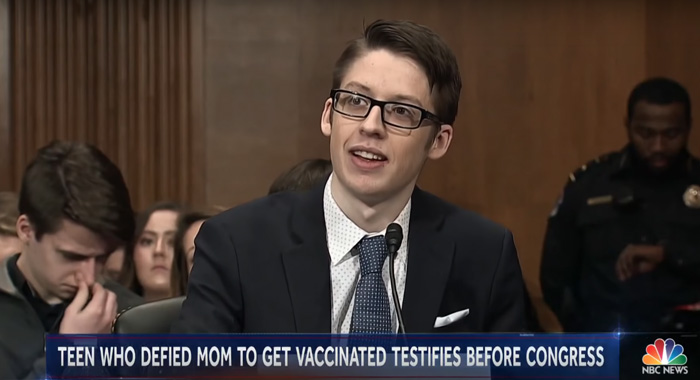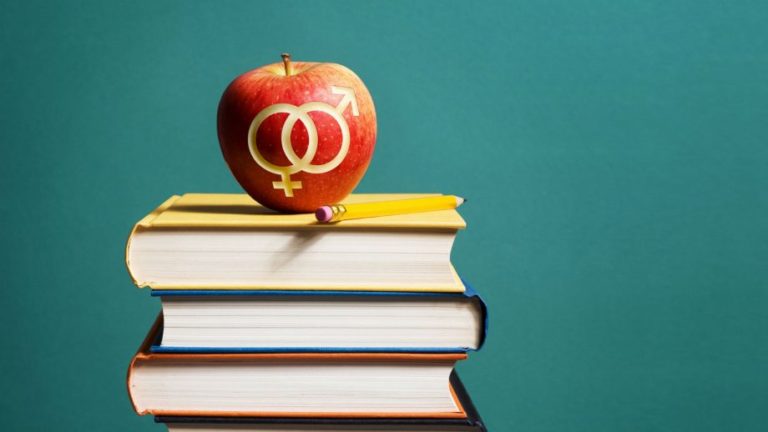On April 15, in a scene reminiscent of the 2009–2010 Tea Party rallies, thousands assembled on the grounds of the Michigan state capitol in Lansing, in defiance of public health officials’ warnings, to protest Governor Gretchen Whitmer’s stay-at-home order. The controversial restrictions include several provisions that have been decried as draconian infringements on the civil liberties of Michiganders, including a ban on in-state travel to vacation residences and a requirement for stores to close areas “dedicated to carpeting, flooring, furniture, garden centers, plant nurseries, or paint.” While most of the demonstrators donned masks and remained in their vehicles, others flounced social distancing guidelines designed to curb the spread of COVID-19.
It’s difficult to divorce this episode from partisan politics. Michigan is one of the most highly contested swing states, crucial to President Trump’s re-election effort, and many of the demonstrators prominently displayed pro-Trump paraphernalia. Governor Whitmer has recently emerged as a prominent Democratic foil to the president, and rumors are circulating that former Vice President Joe Biden, the presumptive Democratic nominee, may select her as his running mate. Trump snidely referred to her as “the woman from Michigan” at a press briefing. Whitmer responded by turning the label into a T-shirt, wearing one that read “That woman from Michigan” during an interview with The Daily Show’s Trevor Noah. President Trump emboldened those urging for incitement against the governor by tweeting out “LIBERATE MICHIGAN!” While the president’s half-hearted trollish call-to-arms was undoubtedly irresponsible, one cannot invalidate the angst millions are feeling during these trying times.
There is a widespread feeling among much of the American public that, in their earnest attempt to stave off the spread of the virus, state and local governments have gone too far in imposing burdensome restrictions on the rights and privileges people have become accustomed to exercising in contemporary life. While the vast majority of these mitigation measures have been enacted in good faith with a patently compelling state interest in mind, overzealous lockdown policies are eroding public trust.
Unfortunately, these misgivings have been vindicated. In Mississippi, a mayor attempted to prohibit drive-in church services during Holy Week until the Department of Justice intervened. Police officers were caught on video removing a man from a bus simply because he was not wearing a mask in Philadelphia. In Colorado, a man was arrested while playing tee-ball with his 6-year-old daughter for a social distancing infraction. These incidents may be anecdotal, but they are indicative of a larger trend of states and municipalities abusing their police powers under the guise of precedent from Jacobson v. Massachusetts (1905).
More recently, when asked by Fox News’ Tucker Carlson whether he had thought about the 1st Amendment implications of his social distancing guidelines, New Jersey governor Phil Murphy claimed he wasn’t thinking of the Bill of Rights and that the line of questioning was “above [his] pay grade.” Without delving into the constitutionality of the state’s COVID-19 regulations, the brazen irreverence demonstrated by the governor when he confessed that he had not even considered his solemn responsibility to uphold basic rights was disgraceful.
The pandemic has also taken a tremendous toll on the U.S. economy. The International Monetary Fund recently announced that the current global shutdown is far more severe than the 2008-2009 Great Recession. About 22 million Americans, 13.5% of the labor force, have filed for unemployment benefits since March. April is expected to see the highest unemployment rate since World War II. With millions confined to their homes, domestic violence cases are skyrocketing.
Congress has taken a series of steps to mitigate the economic fallout of the lockdown. Since the passage of the Coronavirus Aid, Relief, and Economic Security Act, ‘phase 3’ of Capitol Hill’s COVID-19 response, the Committee for a Responsible Federal Budget has projected that the US budget deficit will quadruple this year to almost $4 trillion. By 2023, US debt will surpass records set in the years following World War II. And despite this heavy burden now heaped upon future generations, no amount of stimulus has been able to restore consumer confidence. On April 20, due to a lack of demand, oil prices crashed into negative territory for the first time in history.
It is important to acknowledge that the current state of affairs is unsustainable for working people. To disregard this financial and emotional distress is deeply insensitive. Americans are yearning to get back to work. Writing off this sentiment as the byproduct of ‘false consciousness‘ or some nefarious campaign ploy by the Trump administration to restart the economy before the November election, sacrificing human lives for dollars or votes, as some on the left have suggested, is callously scornful. Those who have contemptuously asserted that there is no need to contemplate the consequences of an indefinite societal-wide lockdown are beyond negligent and epitomize the elite’s disconnect with ordinary Americans.
Before our political leaders make any rash decisions regarding a reopening, a quantification of the trade-offs of such a move must be conducted. Many epidemiologists and public health officials fear that a rollback of mitigation measures too soon could result in the COVID-19 death count to skyrocket and debilitate the economy even further in the medium and long term. If people are going to resume their normal lives, hospitals must have surge capacity, some degree of social distancing must be maintained, and effective anti-viral treatments must be developed until a vaccine arrives.
Sweden offers an example of how we can do this. The country has managed to leave schools, gyms, cafes, bars, and restaurants open throughout the epidemic while keeping mitigation measures in place. Sweden’s COVID-19 death rate is slightly higher than other Nordic countries but considerably lower than Italy, Spain, and the UK, both in absolute and relative terms. The situation in the US is obviously not completely analogous to Sweden. Nevertheless, the Scandinavian nation provides a model for how we can gradually re-establish some semblance of normalcy while protecting at-risk populations, and some states have begun to take notice.
The US must now cautiously forge ahead with the reopening. As autocrats around the world exploit the pandemic to their advantage, America should set an example by refusing to cave to fear. The lives of domestic abuse victims, the plight of working-class people, and our constitutional rights depend on it.



